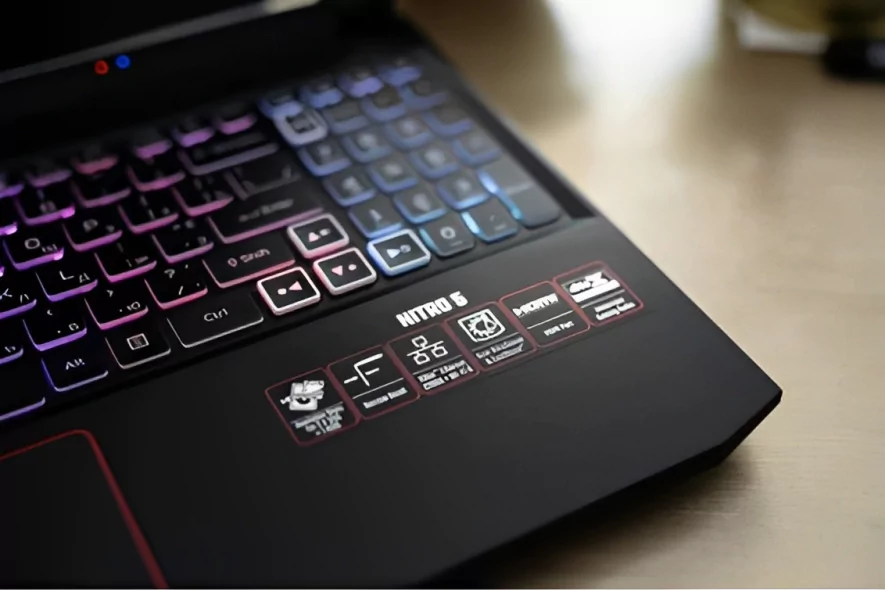How to Check Laptop Specifications Before Buying One?

Purchasing a laptop can be a daunting task, especially with the myriad of options and technical jargon. It’s crucial to understand the laptop’s specifications to make an informed decision that suits your needs and budget. This comprehensive guide will break down the essential components of a laptop and provide helpful tips on what to look for when shopping for your new device.
1 A Detailed Guide on How to Check Laptop Specifications?
Determine Your Needs and Budget
Before diving into laptop specifications, consider your primary usage and budget. Are you a student, a professional, a gamer, or a casual user? Understanding your needs will help you focus on the specifications that matter most to you. It’s also essential to set a budget, as laptops can range from a few hundred dollars to a couple of thousand.
Processor (CPU)
The processor, or central processing unit (CPU), is the brain of the computer. It handles all the data processing and dictates the overall performance of the laptop. When comparing processors, consider the following:
Brand and Model
Intel and AMD are the two primary manufacturers of processors. Each company has various models with different performance levels, such as Intel’s Core i3, Core i5, Core i7, and Core i9, or AMD’s Ryzen 3, Ryzen 5, Ryzen 7, and Ryzen 9.
Cores and Threads
A higher core count means better multitasking capabilities. Most modern laptops have at least dual-core processors, while high-performance laptops may have quad-core, hexa-core, or even octa-core processors. Threads are virtual cores that help with multitasking, and generally, you’ll find twice the number of threads as there are physical cores.
Clock Speed
Measured in gigahertz (GHz), clock speed refers to the processor’s operating frequency. A higher clock speed usually results in better performance. Keep in mind that processors with more cores might have lower clock speeds but still outperform those with fewer cores and higher clock speeds.
Generation
Newer generations of processors offer improved performance, power efficiency, and features. Always aim for the latest generation within your budget.
Memory (RAM)
Random Access Memory (RAM) is a crucial component that determines how efficiently your laptop can handle multiple tasks simultaneously. More RAM allows for better multitasking and faster performance. Consider the following when evaluating RAM:
Size
Laptops typically come with 4GB, 8GB, 16GB, or even 32GB of RAM. Casual users can manage with 4GB, while 8GB is recommended for most users. Professionals and gamers should opt for 16GB or more for optimal performance.
Type
DDR4 is the most common RAM type in modern laptops, with DDR5 starting to emerge. Look for higher DDR numbers, as they provide better performance and power efficiency.
Storage
Storage is where your files, applications, and operating system reside. There are two primary types of storage: Hard Disk Drives (HDD) and Solid State Drives (SSD).
HDD
These traditional drives offer larger storage capacity at a lower price. However, they’re slower, bulkier, and more prone to failure due to their mechanical nature.
SSD
These drives are faster, more reliable, and consume less power. They’re also more expensive per gigabyte compared to HDDs. Opt for an SSD if performance and reliability are essential factors.
Size
Storage capacities range from 128GB to 2TB or more. Choose the size based on your needs, but remember that external storage options like external hard drives and cloud storage can supplement your laptop’s storage.
Display
The display is one of the most crucial aspects of a laptop, as it impacts your overall experience. When evaluating laptop displays, consider the following factors:
Screen Size
Laptops come in various screen sizes, usually ranging from 11 to 17 inches. Smaller screens are more portable, while larger screens provide better productivity and entertainment experiences. Choose a screen size that fits your needs and lifestyle.
Resolution
Higher-resolution displays offer more detailed images and sharper text. Common resolutions include 1366×768 (HD), 1920×1080 (Full HD), and 3840×2160 (4K UHD). Full HD is recommended for most users, while 4K UHD is ideal for content creators and enthusiasts.
Panel Type
The panel type affects the display’s colour reproduction, contrast, and viewing angles. IPS (In-Plane Switching) panels offer better colour accuracy and wider viewing angles compared to TN (Twisted Nematic) panels. Look for an IPS display if image quality is a priority.
Refresh Rate
Measured in hertz (Hz), the refresh rate indicates how many times per second the screen updates its image. A higher refresh rate provides smoother motion, especially in gaming scenarios. Most laptops have a 60Hz refresh rate, while gaming laptops may offer 120Hz, 144Hz, or higher.
Graphics
The graphics card, or GPU, is responsible for rendering images, videos, and animations. There are two types of graphics solutions: integrated and dedicated.
Integrated Graphics
Integrated graphics share system memory with the CPU and are suitable for casual usages, like browsing, document editing, and light multimedia consumption. Intel’s UHD Graphics and AMD’s Radeon Vega are examples of integrated graphics.
Dedicated Graphics
These are separate graphics cards with their memory, offering better performance for gaming, video editing, and other graphics-intensive tasks. NVIDIA GeForce and AMD Radeon are the leading manufacturers of dedicated graphics cards.
Connectivity and Ports
Evaluate the laptop’s connectivity options to ensure it meets your needs. Here are some common ports and features to consider:
USB Ports
Check for USB Type-A and Type-C ports, with support for USB 3.0 or later, for faster data transfer speeds.
HDMI/DisplayPort
These ports enable you to connect your laptop to an external monitor or TV.
SD Card Reader
This is convenient for transferring files from cameras and other devices.
Ethernet
A wired Ethernet connection offers faster and more stable internet connectivity than Wi-Fi.
Wi-Fi and Bluetooth
Ensure the laptop supports Wi-Fi 5 (802.11ac) or Wi-Fi 6 (802.11ax) for better wireless performance. Bluetooth 4.2 or later is recommended for connecting peripherals like mice and keyboards.
Battery Life
Battery life is a vital factor, especially for users who need their laptops on the go. Look for laptops with at least 6-8 hours of battery life for casual usage and 10+ hours for professional use. Keep in mind that battery life varies depending on the laptop’s specifications, usage patterns, and power settings.
Operating System
Choose an operating system that matches your preferences and software requirements. Windows is the most popular choice, followed by macOS (available exclusively on Apple devices) and Linux (for advanced users who value customisation).
Build Quality and Design
A laptop’s build quality and design can impact its durability, portability, and aesthetics. Consider factors like weight, materials, keyboard and trackpad quality, and overall ergonomics.
Warranty and Customer Support
Before finalising your purchase, research the warranty and customer support offered by the laptop manufacturer. A good warranty policy provides peace of mind and ensures you can get timely repairs or replacements if any issues arise. Look for a warranty of at least one year, with options to extend it if desired.
Additionally, reliable customer support is crucial for troubleshooting, technical assistance, and warranty claims. Check online forums, reviews, and social media to gauge the manufacturer’s reputation for customer service.
Upgradability
While not a priority for all users, upgradability can be an essential factor if you plan to keep your laptop for several years. Upgradable components like RAM and storage can help extend the laptop’s lifespan and improve its performance over time. Research the specific laptop model to determine the ease of upgrading these components.
Accessories and Bundles
Some laptops come bundled with accessories like a carrying case, mouse, or even software subscriptions. Evaluate these offerings, as they may add value to your purchase and save you money in the long run. Additionally, consider any extra accessories you might need, such as a cooling pad for gaming laptops or a docking station for professional use.
Retailers and Deals
Compare prices and deals from multiple retailers to get the best value for your money. Look for sales events, student discounts, or refurbished options to save even more. Keep in mind that reputable retailers are more likely to offer reliable customer service, returns, and warranty support.
Test Before You Buy
If possible, visit a local electronics store to test out the laptop in person. This hands-on experience allows you to assess factors like display quality, keyboard and trackpad comfort, and overall build quality. You can also ask store representatives for advice and insights into the laptop’s performance.
2 Wrapping Up
Armed with this comprehensive guide, you’re now prepared to check laptop specifications and make an informed decision when purchasing your new device. Remember to prioritise the components that matter most for your specific needs and usage patterns. By following this guide, you can confidently check laptop specifications and make an informed decision tailored to your needs and budget. It’s also essential to read reviews and user feedback to gain insights into the laptop’s real-world performance, potential issues, and overall satisfaction.
Community Q&A
About This Article
This article has been viewed 530 times.



